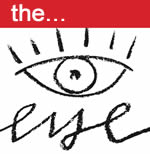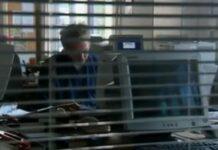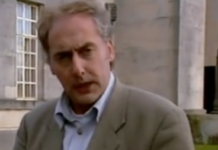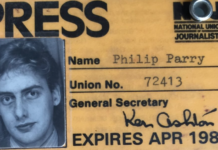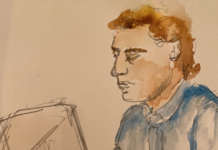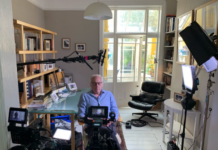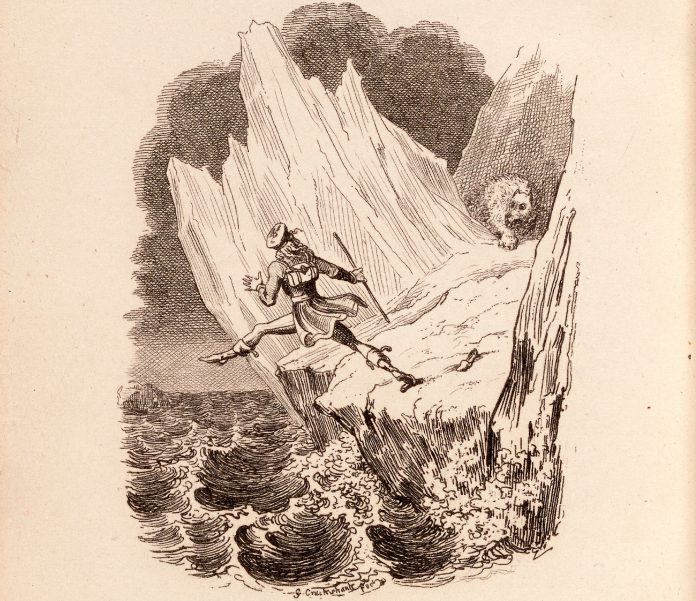- Hacked off again - 19th December 2025
- Massage table part two - 18th December 2025
- Massage table part one - 17th December 2025
The below is excerpted from the foreword to Debths, Susan Howe’s latest collection, out today from New Directions.
Going back! Going back!
“Little Sir Echo, how do you do? / Hello! (Hello!) Hello! (Hello!) / Little Sir Echo, we’ll answer you / Hello! (Hello!) Hello! (Hello!) / Hello! (Hello!) Hello! (Hello!)/ Won’t you come over and play? (and play)/ You’re a nice little fellow / I know by your voice/ But you’re always so far away (away).”
—Bing Crosby and the Music Maids (1939)
When I was eight my parents packed me off to Little Sir Echo Camp for Girls on Lake Armington in the foothills of New Hampshire cofounded and owned by Mary Hoisington and Margaret Conoboy ten years earlier. Apparently the women chose the name because of an echo that bounces off the surrounding White Mountains. An actual child may or may not fit parental fantasies. I hated the place. Most of all I dreaded riding classes and spent many nights praying I would be assigned the tired elderly horse with a creaking stomach for the next day’s obligatory ride around the ring. On the one visiting day allowed per summer we rowed across the lake and picnicked on a secluded beach at the edge of a pine forest. I begged them to ransom me. But no. Around four P.M. they left for Boston, leaving me alone with my dread of being lost in the past; absent.
Show me affection as a small nonunderstanding person. Two people with covered lanterns stand on the brow of adjacent foothills. Watch them walking forward from folklore carrying tilted umbrellas. Faint whispers. Galaxy clusters. Telescopes also need to be tilted a little so that light traveling down an optical tube will come into play. Calendar songs, family trees, broken branches, love songs, songs of captives, songs of robbers, songs around the campfire. “A tune beyond us, yet ourselves, // A tune upon the blue guitar.” Chocorua is the highest mountain peak in New Hampshire. When Chief Chocorua leapt from its rocky summit to his death on the rocks below, war was in his heart. He put a curse on the land. “Last night at the end of night his starry head, / Like the head of fate, looked out in darkness.” “Chocorua to Its Neighbor” is one of my favorite Wallace Stevens poems. Let’s face things exactly as they are. He led a double life as a successful Surety and Fidelity Claims lawyer.
Speaking of the practice of law in relation to writing and second sight, Peter Rugg, the Missing Man is the first of “two tall tales” written by William Austin (1778–1841), a Massachusetts attorney. Austin presents its source as an old New England legend. An absent husband responsible for his own mysterious ruin is condemned to wander with his small daughter in a one-horse chair perpetually searching for Boston. In one of Nathaniel Hawthorne’s lesser stories, “A Virtuoso’s Collection,” Rugg crops up with Peter Schlemihl’s lost shadow and a famed New Hampshire gemstone. The precious jewel, said to sparkle (like a meteor) called for another Hawthorne story, “The Great Carbuncle of the White Mountains,” this time inspired by an Amerindian fable from Saco, Maine: a manic Ruggian seeker wanders among mountains searching for the marvelous stone until the end of time. Some scholars say Austin’s tall tale also foreshadows “Wakefield,” which in its turn triggers Melville’s “Bartleby the Scrivener.” There are names under things and names inside names. “Poor [Rugg]! Little knowest thou thine own insignificance in this great world!”
Long ago people were afraid of mountains. The how and the why reflected in mystery plays and troll mythologies. Only art works are capable of transmitting chthonic echo-signals.
“Full many a glorious morning have I seen / Flatter the mountain tops with sovereign eye.”
In the fall of 1889, Leonora Piper, the famous Boston medium, spent a week with William James and his wife at their house at Chocorua for discussions concerning various aspects of trance-phenomena including her trance-talk with “Phinuit” “a former native of this world.” One afternoon they took a break from work and went fishing. Mrs. Piper caught the largest bass ever recorded in the lake.
There. Messages flow through clear lake water and yes, gravity pulls matter together to form a cosmic web. Even if this looks like the end of my Picnic at Lake Armington story, the three of us are strung together like beads on a necklace. My fingers are too arthritic to work the little clasp.
“It’s for the others”
The work in Debths was originally inspired by Paul Thek’s retrospective called “Diver” in 2011. I have always been interested in folktales, magic, lost languages, riddles, coincidence, and missed connections. What struck me most was the way his later works, often painted swatches of color spread across sheets of newspaper with single words, phrases, or letters scribbled over the already doubled surface, transformed these so-called art objects, into the epiphanies, riddles, spells and magical thinking I experienced one afternoon in the old Whitney Marcel Breuer building. I particularly loved the small bronze sculptures titled The Personal Effects of the Pied Piper scattered here and there. Shortly afterward I spent a month as artist-in-residence at the Gardner Museum in Boston.
In 1903, Isabella Stewart Gardner personally installed her collection of over twenty-five hundred objects (paintings, sculpture, furniture, textiles, drawings, tapestries, silver, ceramics, glassware, illuminated manuscripts, rare books, photographs, and letters from Europe, Asia, the Islamic world, and America) in a building modeled on the Palazzo Barbaro in Venice. (A view of the same palace from the Iron Bridge in Venice served as the model for Milly Theale’s palazzo in The Wings of the Dove). When she died in 1924, Gardner endowed both building and grounds as a museum “for the education and enjoyment of the public forever” on the condition that her original arrangement of the objects in each gallery (or named room) would be kept just as she left them. Nothing was to be added, shifted, or sold. If her arrangements were disturbed, the property on what was once saltwater marshland in the Fenway-Kenmore area—which she liked to call “Venice on the Fens”—including the art objects inside would be auctioned and the proceeds would go to Harvard University. The document was drafted and drawn up by her friend Professor John Chipman Gray, a member of the Harvard Law faculty and the author of Restraints on the Alienation of Property, The Rule Against Perpetuities, and The Nature and Sources of the Law.
Restraints (currently known as RAP) is encountered, often dreaded, by contemporary American law students. “Soon soon you will find the clue.”
In 1999, the museum directors felt it was time to “embark on a strategic planning process to plan for the future.” They decided to build an addition to the original structure in order to relieve pressure on the aging interior spaces. In 2012, the added wing, designed by Renzo Piano—a soaring glass, steel, and copper-clad structure “crisp, light, and transparent, reminiscent of nautical design, and thus a deliberate foil to the closed ‘plain brown wrapper’ of the palace,” opened to the public. Visitors now enter the original Willard T. Sears damp, dimly lit, late Victorian faux-Venetian structure by passing through a minimalist glass and steel corridor.
At 10:15 one November morning, a beam of sun slipped across the threshold. An echoing plash of water issuing from the mouths of stone dolphins blended with the scent of fresh red poinsettias, jade plants, and pyrocanthia in the atrium, while light flickering across ceramic floor tiles in the adjoining Spanish Cloister made them seem blue as the blue in Paul Thek’s untitled synthetic polymer and gesso on newspaper (Diver) paintings.
Wandering through the inner rooms before and after visiting hours when whimsical combinations and odd analogies assume a second life, I began to think of Gardner as a pioneer American installation artist.
In the dimly lit Titian room Titian’s The Rape of Europa (1561–1562) is displayed directly above a long swatch of pale green silk cut from her wedding gown designed by Charles Frederick Worth in 1860. “I am drinking myself drunk with Europa and then sitting for hours … ,” she told her friend Bernard Berenson after he acquired it for her collection. I wonder if she was a drinker like my mother.
Isabella’s little chair with its light blue slipcover is placed directly in front of Christ Carrying the Cross (1505–1510), Circle of Giovanni Bellini. She has hung the portrait so that his tear-streaked face half shadowed by the angle of the wooden cross is aimed directly at Jupiter’s savage eye in Europa. The Savior will not give up and be silent in true righteousness as a painted image.
The pages of A. B. Kempe’s “Note to a Memoir on the Theory of Mathematical Form” are shattered to pieces. The filing cases are old, some of them shaky with loose covers and broken corners and sides. Mrs. Gardner didn’t live to learn that in string theory matter falls in. So the less said here concerning the ultimate nature of possible worlds and supermassive black holes in this our Godforsaken twenty-first century, the better.
Susan Howe was born in Boston in 1937. Winner of the Bollingen Prize, she has been acclaimed as “the still-new century’s finest metaphysical poet” (Village Voice). Her latest collection, Debths, is out today from New Directions.
Source: Paris Review
